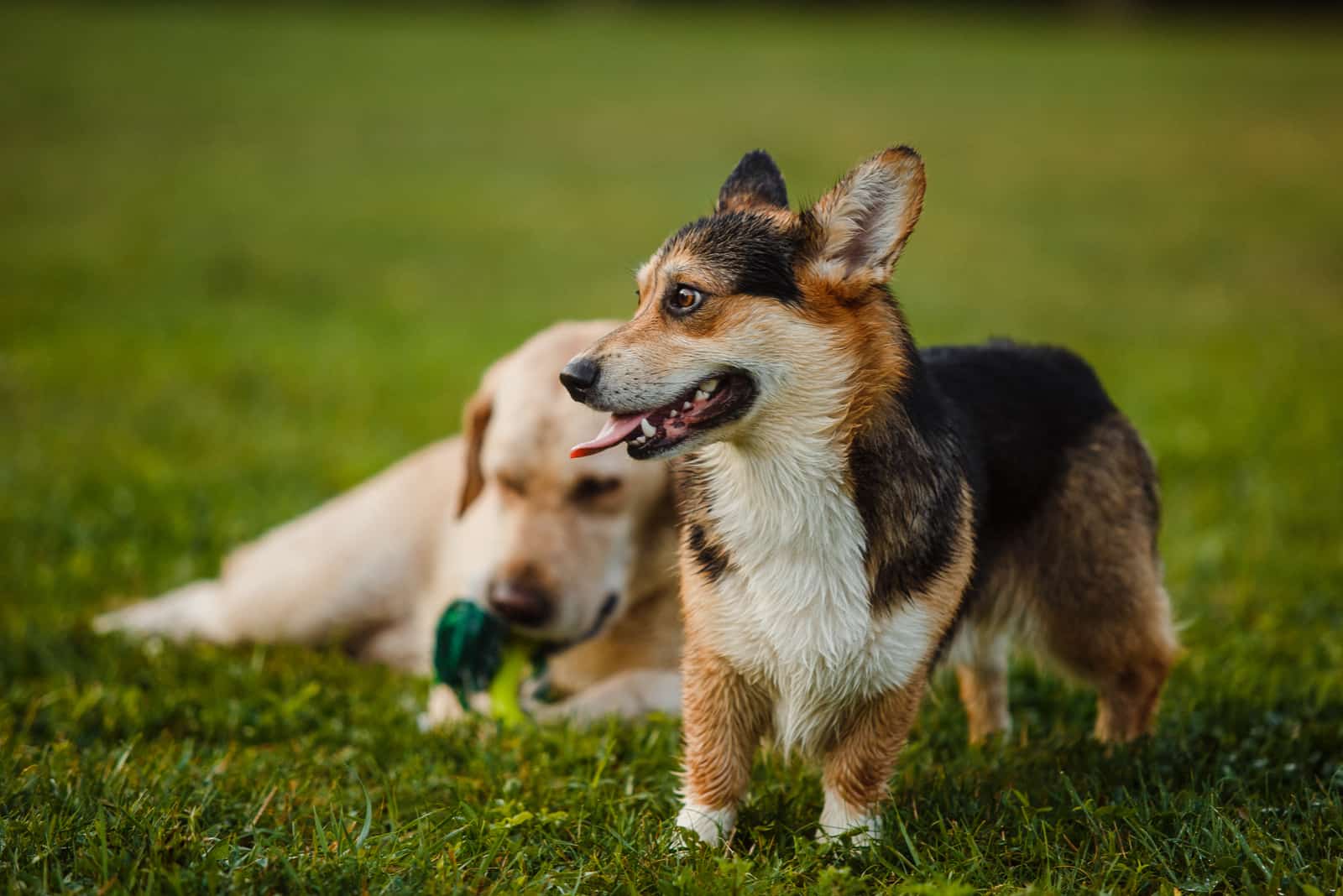Are you looking for a loyal, friendly companion that stays small in size? Then the Corgidor might be an amazing dog for you! This Corgi Lab mix is a perfect combination of two adorable dog breeds.
Mixed dog breeds are the new hit. Although a crossbreed of a Labrador Retriever and a Corgi might not be the first mix to come to mind, it’s certainly a fantastic family pet. Enter the Corgidor!
Before you decide to adopt or buy this designer dog, it’s important that you know what you’re getting into. As this is a fairly new crossbreed, there isn’t much information out there. Still, we’ve gathered all we could to help you understand this mixed breed.
To do so, you have to fully understand both parent breeds and what this means for the mixed offspring.
Let’s begin!
The Issues With Designer Dogs
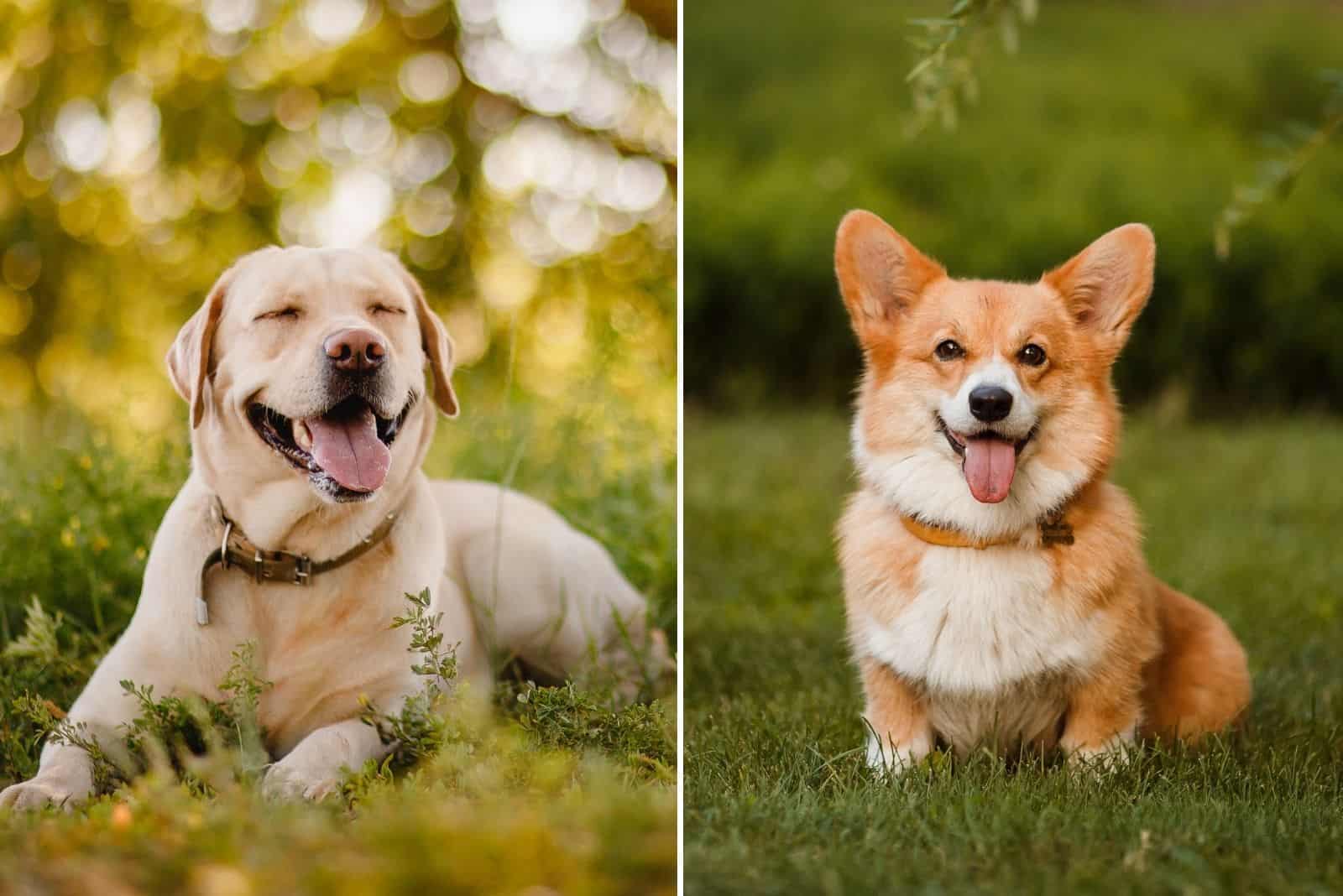
When it comes to mixed breeds, there are many controversies surrounding crossbreeding practices.
A lot of breeders support the creation of designer dogs. Mixing genes of purebred parents means more good traits can enter the genetic pool, which means healthier offspring.
There is a lot of truth in saying that mutts are healthier than purebred dogs, and this is thanks to the hybrid vigor. This trait allows mixed breed dogs to have fewer health problems than their purebred parents.
On the opposite side, other breeders are strictly against crossbreeding. They think it ruins the pureness of the bloodlines and that it can negatively affect the dog’s appearance and behavior.
At the same time, big kennel clubs such as the American Kennel Club (AKC) or the United Kennel Club (UKC) don’t recognize crossbreeds. Registering your mixed breed dog isn’t possible unless you search for specialized clubs, such as the Service Dog Registry of America.
This is because, unlike with purebred dogs, the appearance of a designer dog can be very unpredictable. You can get several dogs from the same litter that look nothing alike! As there is no breed standard to follow, these dogs cannot be registered.
Despite this, mixed breeds are becoming increasingly popular, and many crossbreeds even end up costing much more than purebreds.
Corgi Mix With Lab

Photo from: @jackson_the_corgidor
The Corgi Lab mix – also known as a Corgidor– is, as its name suggests, a crossbreed between a purebred Labrador and a purebred Welsh Corgi.
Corgis are among the most popular dogs worldwide, all thanks to the world wide web. Their adorable appearance, long body on short legs, and fluffy butts without a tail have made them instantly recognizable.
Still, many dog lovers don’t know that there are two Corgi breeds: the Cardigan Welsh Corgi and the Pembroke Welsh Corgi. The latter is the Corgi you usually see in internet memes and pictures.
The Labrador Retriever, on the other hand, is very popular because of its loyalty and intelligence. This makes it one of the most common canine pets in the world.
It’s easy to see how combining the two would result in an adorable mix with a great personality!
How Big Do Lab Mixes Get?
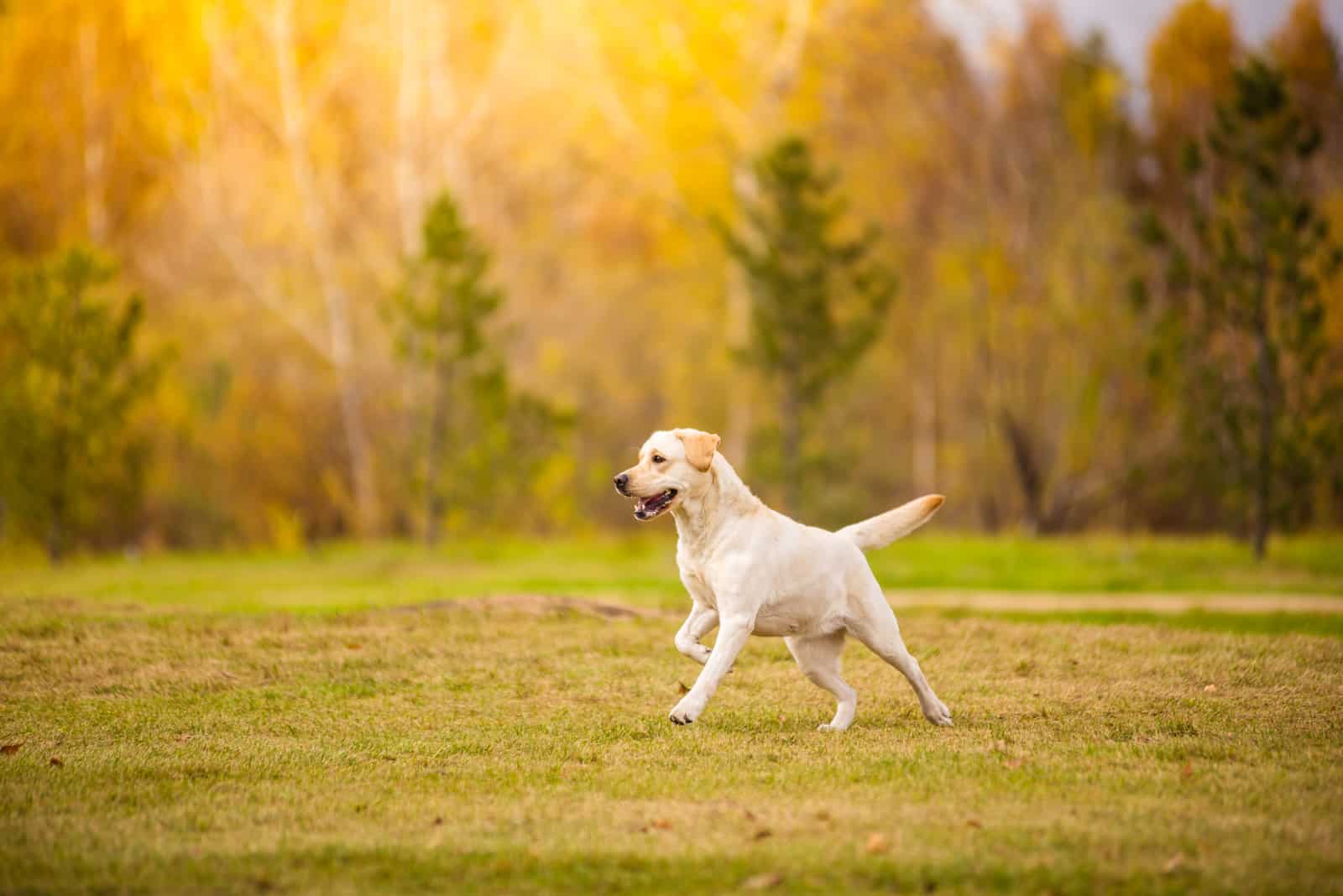
The size of a crossbreed is usually between the size of both of its parents. This can be tricky when you have two dogs that vary greatly in size.
The Labrador Retriever is a medium to large dog that can stand between 21.5 and 25 inches in height with a weight of 55 to 80 lbs. On the other hand, the Corgi is a small to medium dog that stands up to 12 inches in height and weighs around 25–30 lbs.
As you can see, this is quite a significant difference, with a Labrador being up to three times the size of a Corgi. Keep in mind that the Cardigans tend to weigh up to 10 lbs more than Pembrokes, so it’s also important to think about the Corgi breed you’ve mated.
Unfortunately, there is no guarantee of how large a Corgi Lab mix will get. They can be anywhere between 10 and 25 inches in height and weigh between 25 and 80 lbs.
Full Grown Corgi Lab Mix
The appearance of a Corgi Lab mix is as unpredictable as its size. These pups can look anywhere from slightly smaller Labradors to Corgis with regular legs instead of stubby ones.
Most Corgi Lab mixes will be medium-sized dogs, and some might have short legs. Their looks can be any mix of parent breed’s traits.
Corgis are small dogs with Dachshund-like bodies. While Cardigans have long, fluffy tails, Pembrokes have a bobtail or no tail at all. They have long, erect ears and a big, fox-like head. Despite their size, their bodies are strong, perfectly designed for herding cattle.
Labrador Retrievers have an ‘otter’ tail, powerful jaws on a clean-cut head with a broad skull and moderate stop, but kind, dark eyes.
A Corgi Lab mix will usually be a combination of some of these traits, making it hard to determine the exact breed at first glance. Many will inherit the gene for short legs, so this is a common trait in any Corgi mix.
Corgi Lab Mix Temperament

Overall, a Corgi Lab mix is an amazing family pet. If you want a loyal companion, you can count on it to be just that! Still, there are a few things you need to know.
The Good
The Corgi Lab mix makes an amazing best friend to anyone! They are loving and friendly, always eager to please their owners. They will do whatever you want of them, as long as they are happy.
These pups will consider themselves to be members of your pack. They’ll likely love everyone in your circle of friends and family, including children. They are laid-back and patient, just like their Retriever parent, so they can deal with most everyday hardships.
The Corgidors are confident dogs that can be bold when they need to. This makes them excellent watchdogs. Most of them will also make amazing service and therapy dogs because of their gentle nature.
The Bad
Most bad behavioral traits Corgidors will inherit will be from their Corgi parent. This includes stubbornness, a trait that can negatively affect your training of them. If they are not in the mood, they’ll ignore you instead of listening to your commands.
Also, they can be wary of strangers if you haven’t socialized them in time. Corgis can be very dominant, and they won’t tolerate other dogs in their territory.
Fortunately, this type of behavior can be fixed with early socialization and proper training. It’s essential to expose your Corgidor puppy to new people, animals, and experiences from an early age to prevent a dominant attitude.
At the same time, they can become overly protective, even on the verge of jealousy. This can make them appear aggressive toward other pets, sometimes even humans. This, too, can be ‘fixed’ by socializing your pup in time.
While rare, some Corgi Lab mixes might inherit the Corgi’s strong herding instincts. This can make them nip at children’s heels, which shouldn’t be dangerous unless your dog is the size of a purebred Labrador.
Still, this type of behavior can traumatize children, causing them to be afraid of their new family member. This is yet another reason why proper training is important. Your Corgi Lab mix should always know when to stop a certain activity.
Coat Type And Coat Colors

Photo from: @islandnette
Labrador Retrievers have a short, dense, weather-resistant coat that can easily be considered its most distinguishing characteristic.
Corgis have a medium length double coat with a thick undercoat and a somewhat longer outer coat. They can come in various colors: Pembrokes usually come in red, gold, apricot, and tricolor, while Cardigans are much more diverse, so they can be sable, merle, brindle, blue, and so on.
This means that a Corgi Labrador mix can come in a variety of coat colors and patterns.
A Labrador’s coat can somewhat influence the overall appearance of a puppy. Although there is no guarantee as to how a crossbreed will look, we’ll go over a few possibilities.
Corgi Yellow Lab Mix
Yellow is the most common coat color for Labrador Retrievers. As this is also the standard color for Pembroke Corgis, most breeders will combine two dogs with a yellow coat.
This Corgi Lab puppy will certainly have a yellow coat, with more or fewer markings on them – usually white in color. These dogs are very sought-after, as they’ll keep the ‘purebred’ appearance.
Chocolate Lab Corgi Mix
Chocolate is another common color in both Labradors and Corgis, so breeders will do their best to mate a chocolate Labrador with a chocolate Corgi.
Solid color chocolate Corgis are very rare, so these crossbreeds will almost always have some markings on them, usually white or tan.
As this is a fairly rare color, expect a chocolate Lab Corgi mix to cost somewhat more than yellow or even black Corgidors.
Black Lab Corgi Mix
While solid black Corgis, either Pembrokes or Cardigans, are fairly rare, this is a somewhat common color in Labradors. Still, finding a Lab Corgi mix in pure black is rare, as most will inherit some markings or even be tricolored.
Unfortunately, black dogs aren’t that popular, no matter the dog breed, and the same goes for this crossbreed.
Exercise Requirements

Photo from: @rosieandbadger
A Corgi Lab mix will usually be very active, with high energy levels. Both parent breeds need a lot of exercise, so it’s no wonder the same applies to their crossbreed. If you don’t give your Corgidor regular exercise, he might develop destructive behavior.
You should give these dogs at least a two-hour walk a day. Also, you should make sure they have a lot of playtime. This will help not only deplete that excess energy but can increase your bond. If you’re not able to dedicate that much time to your pooch, consider hiring a dog walker.
As both Labradors and Corgis used to be hunting and herding dogs, your Corgi Lab mix might enjoy some other activities alongside long walks, such as hiking, swimming, or playing fetch and Frisbee throwing.
In fact, as Labradors are huge fans of water, there is a high chance your Corgi Lab mix will be as well. If you cannot get a kiddie pool for your pup or take him to a lake regularly, consider putting on a sprinkler in your backyard so your doggie can play.
Dog Training
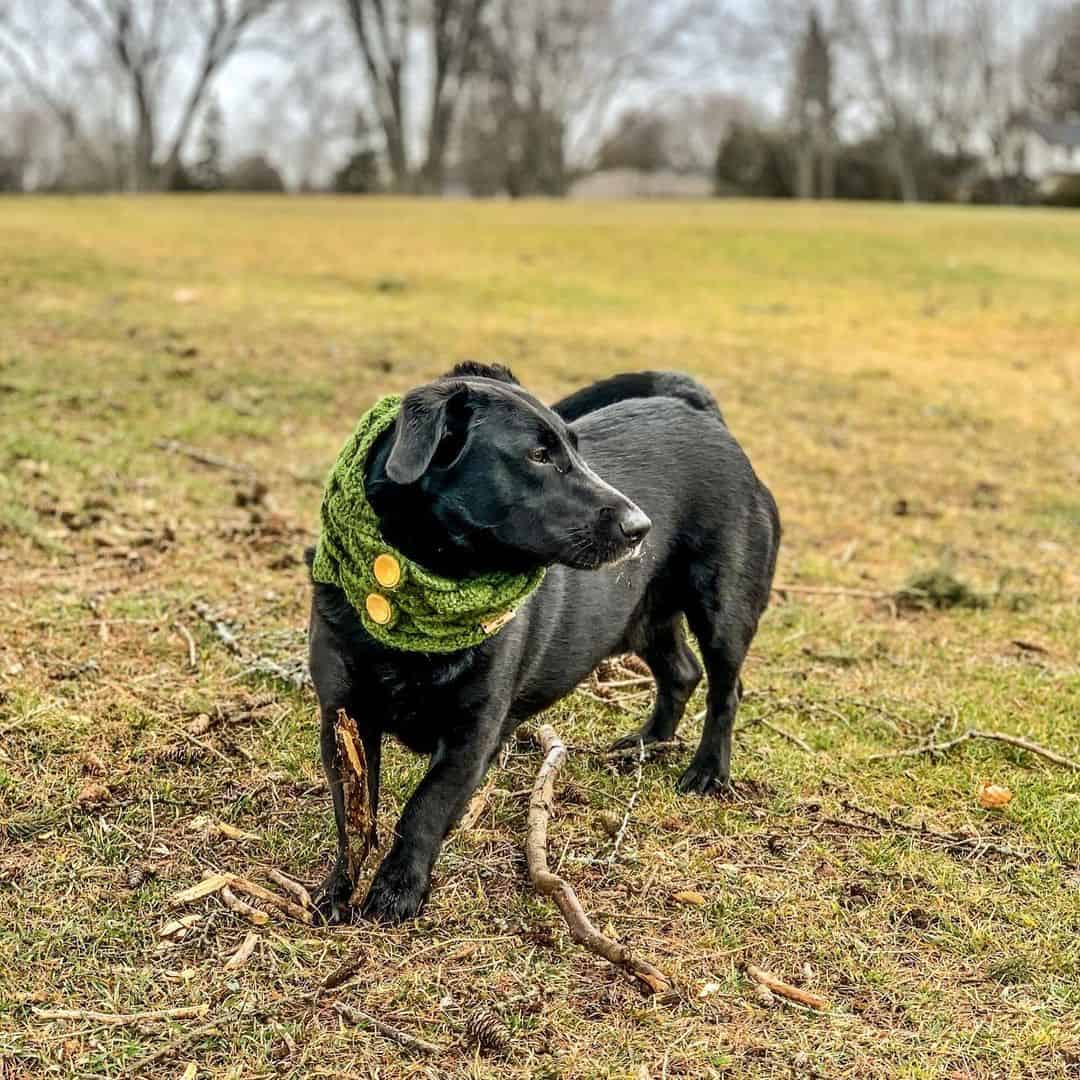
Photo from: @jackson_the_corgidor
As mentioned before, a Corgi Lab mix might be the best dog when it comes to training. These are smart dogs that love to please their owners. Training them should be comfortable and almost effortless.
The key to having a well-behaved dog is to start early. If you’ve trained your dog from puppyhood, he’ll be more likely to listen to your commands.
Start by teaching him simple commands and repeat them daily. Wait until your pup has learned one thing before going onto another. Both Corgis and Labradors can get distracted very easily, so don’t overwhelm them.
You should always start with the most essential tasks, such as potty training, house proofing, crate training, ‘sit,’ and ‘stay.’
Another important thing is to be consistent and clear with your commands. If there are other people in the house, all of you should stick to using the same commands so as not to confuse your pup.
Don’t scold or hit your dog, no matter what he does wrong. Instead, use positive reinforcements such as treats and pets when he does something good. Just remember to use healthy treats such as Brussels sprouts or carrots, as this breed is prone to obesity.
The environment is just as important in dog training. As these pups are easily distracted, you need to train them in a quiet area where nothing can disturb them. A dog park could even be a good idea if there are not too many other dogs there and your pooch is familiar with the location.
Care And Grooming

Photo from: @corgidorable_sheila
A Corgi Lab mix sheds a lot, so weekly brushing is a must. During the shedding season, which can happen once or twice a year, you might even have to brush them daily to remove all the loose hairs and keep their fur shiny and healthy.
No matter what coat type they inherit, these dogs will shed. Still, as their coats won’t become too long, there is no need to take them to the groomer unless you don’t have the time to wash them yourself.
Also, these dogs will love getting themselves dirty. This means you might have to give them regular baths to keep them from getting skin infections.
Just keep in mind that you’ll have to use a good dog shampoo. Shampoos made for humans won’t do because they can irritate a dog’s skin. You can find plenty of good products online on websites like Amazon.
Nutrition
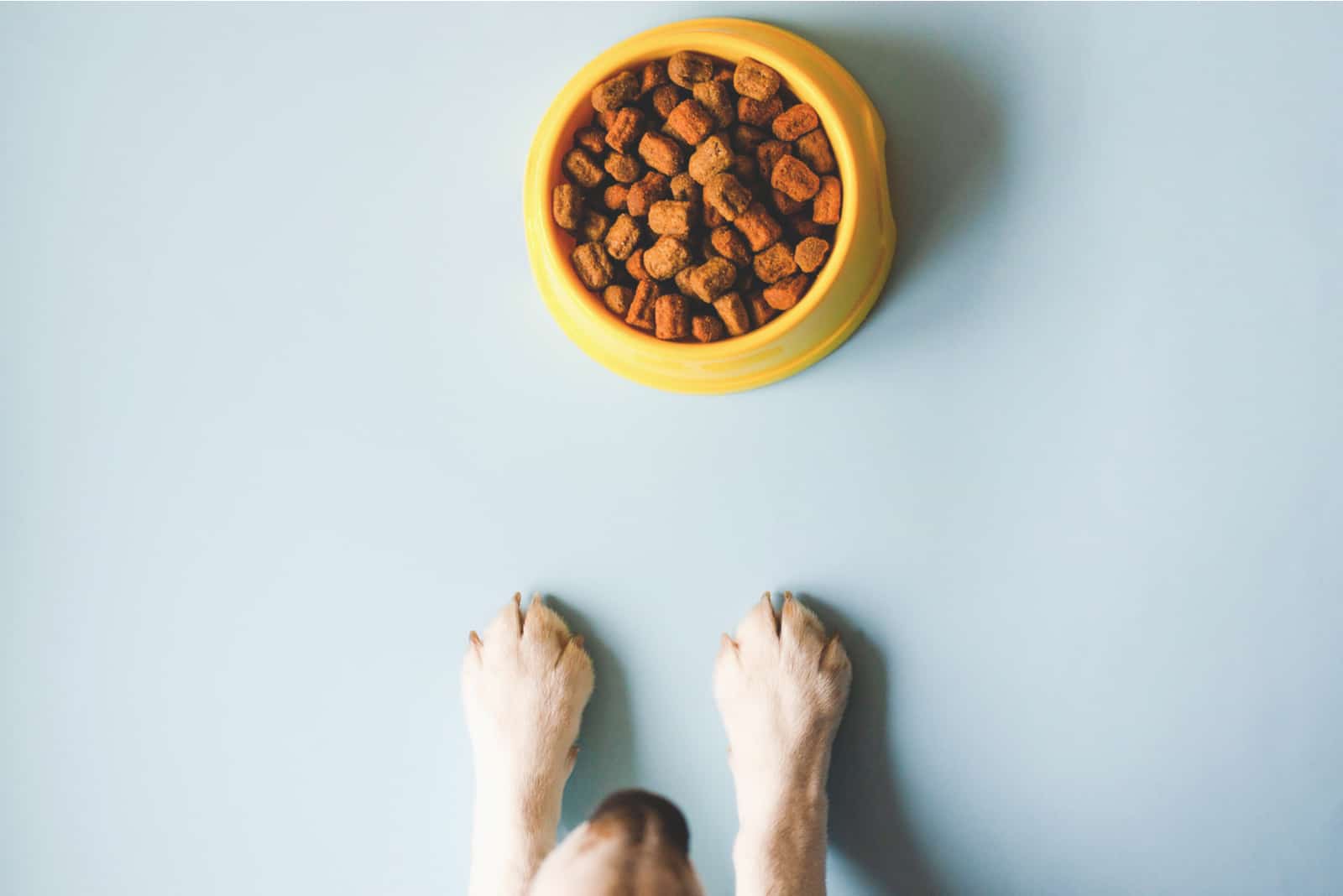
The Corgi Lab mix is prone to obesity, so its food intake should be carefully monitored. The exact amount of food will depend on its size, so always make sure to weigh your pup and consult your vet. No matter how much dog food you give your pup, he should have two meals a day.
As this is an energetic dog, he should have constant access to water too. Also, make sure to combine dry and wet foods, as not all dogs will love drinking water regularly.
Keep in mind that puppies don’t have the same nutritional requirements as adult dogs. They’ll usually eat less food, but the nutritive value will be very different as they are still growing.
Similarly, once your pooch becomes a senior, he will no longer be able to eat the same food he ate during adulthood.
Since Corgi Lab mix dogs are prone to dental infections, add food that’s good for their teeth, including some good dental sticks.
Some people like to add human food to their dog’s diet. However, this can be a terrible idea. Many foods that are good for humans can be toxic to dogs. Some might even be deadly.
Some of the foods you should never give to your Corgi Lab mix include:
• Garlic, onions, and chives
• Bones, especially cooked chicken bones
• Junk food
• Food and drinks with caffeine or alcohol
• Grapes or raisins
To keep your Corgi Lab mix healthy and happy, you need to pay close attention to what you feed them. This includes avoiding foods that are bad for dogs.
Don’t pick a certain dog food just because it’s cheap. This usually means it’s filled with corn or additives that can be very bad for your pooch. Always read the reviews and listen to other dog owners’ experiences.
Don’t change your pup’s diet without consulting your vet first. They can look at your dog and let you know if there are certain nutrients you should avoid or add. Fortunately, Corgi Lab mixes aren’t prone to food allergies, so you should have a wide variety of products to choose from.
Corgi Lab Mix Health

While Corgi Labrador mix dogs are usually healthy thanks to hybrid vigor, you can never be entirely certain whether or not your dog will get a certain health issue. In fact, a Corgi Lab mix can inherit any health condition that its parents might be prone to.
This includes:
Patellar Luxation
Patellar luxation occurs, as its name suggests, when the patella luxates. What does this mean?
The patella is another word for kneecap, while ‘luxating’ means ‘moving.’ In other words, it occurs when the patella moves from its correct position, displacing the kneecap.
You will notice that this has happened when your dog starts limping until he manages to move the kneecap back into position. Most dogs will be able to do this by themselves.
However, this condition can worsen over time, causing your puppy pain, especially when they may no longer be able to fix it without the help of a vet. If this occurs, surgery is the only permanent solution.
Patellar luxation is common in all dogs, but it is prevalent among smaller dog breeds, such as Corgis.
Hip Dysplasia And Elbow Dysplasia
Hip and elbow dysplasia are another two common orthopedic conditions in dogs. They are usually hereditary and are more prevalent in medium to large dog breeds prone to obesity.
In many cases, hip and elbow dysplasia can be kept under control by just using pain meds and physical therapy. However, if they worsen, surgery might be required.
These two health problems are contributory factors to lameness, osteoarthritis, and reduced mobility.
Ear Infections
Ear infections are common in all dogs with large or floppy ears, including Labradors, Corgis, or even Beagles. Most infections are harmless, but some can cause hearing loss or even total deafness.
To prevent ear infections, you should take your pup to the vet regularly to have its ears cleaned. You should also clean its ears every week using a special ear cleanser.
If the infection is ongoing, the vet might prescribe anti-inflammatory medications and oral antibiotics.
Cataracts
A Corgi Lab mix can also be prone to a variety of eye conditions, and one of the more common ones is cataracts.
Cataracts occur when the lens of the dog’s eye clouds. This is caused by changes in the lens’ water balance or changes to the lens’ proteins.
Once this occurs, the light cannot reach the retina, causing damaged vision. If left untreated, it might even cause blindness.
You can notice cataracts if your dog has a white disk right behind its iris.
Progressive Retinal Atrophy (PRA)
Progressive retinal atrophy is an inherited disease that causes increasing vision loss in canines. This degradation can last for a few years or just a few months.
While PRA can be found in any dog breed, it is most common in Poodles, Cocker Spaniels, German Shepherds, and, unfortunately, Labrador Retrievers.
Hypothyroidism
Hypothyroidism occurs when the thyroid gland stops working properly. It usually occurs when the dog’s immune system confuses the thyroid for some foreign object, attacking it.
This is a hereditary condition that still isn’t entirely understood.
Some signs of hypothyroidism include weight gain, cold intolerance, lethargy, thinning of the coat, slow heart rate, and high blood cholesterol.
Intervertebral Disc Disease (IVDD)
Intervertebral disc disease is an age-related degenerative process. It affects the dog’s spinal cord over a long period of time.
In dogs suffering from IVDD, the shock-absorbing discs located between a canine’s vertebrae begin to harden. This will lead to the spine losing its elasticity.
Over time, this condition might not just cause your dog pain, but it can paralyze its hind legs. Surgery might be required to help your Corgi Lab mix walk again.
Von Willebrand’s Disease (VWD)
Von Willebrand’s Disease is the most common bleeding disorder in dogs and humans alike. It’s caused when a dog’s body doesn’t have enough of a specific protein that helps blood cells to clot.
VWD can affect dogs of any age, but many of them don’t show any signs of the disease. Others might show spontaneous bleeding from the nose, mouth, ears, or urinary bladder.
The outcome of the disease depends on its severity. If a dog has uncontrollable bleeding that is left untreated, it might even cause death.
Idiopathic Epilepsy
Idiopathic epilepsy is the most common cause of seizures in canines, making it the most common neurological condition. It causes repeated episodes of seizures, but the exact cause of them is unknown.
How Long Do Corgi Mixes Live?

Nothing is more unpleasant than trying to predict how long your pup will live. While some estimations can be made, all of this is just speculation. Not even a vet can give you an exact number, so the age we list below is just an estimation after years of researching the lifespan of certain dog breeds.
To understand a Corgidor’s lifespan, you must look at the lifespan of its parent breeds.
A Corgi’s lifespan is between 12 and 15 years. This is a dog breed that can live for a fairly long time, which is always good news.
Labrador Retrievers tend to live a few years shorter, as their lifespan is 10–12 years. This would put the Corgi Lab mix’s lifespan at 10–15 years.
Still, as this mixed breed has the advantage of hybrid vigor, we can say with confidence that most Corgi Labs will live up to the higher part of that spectrum.
Corgi Lab Mix Puppy
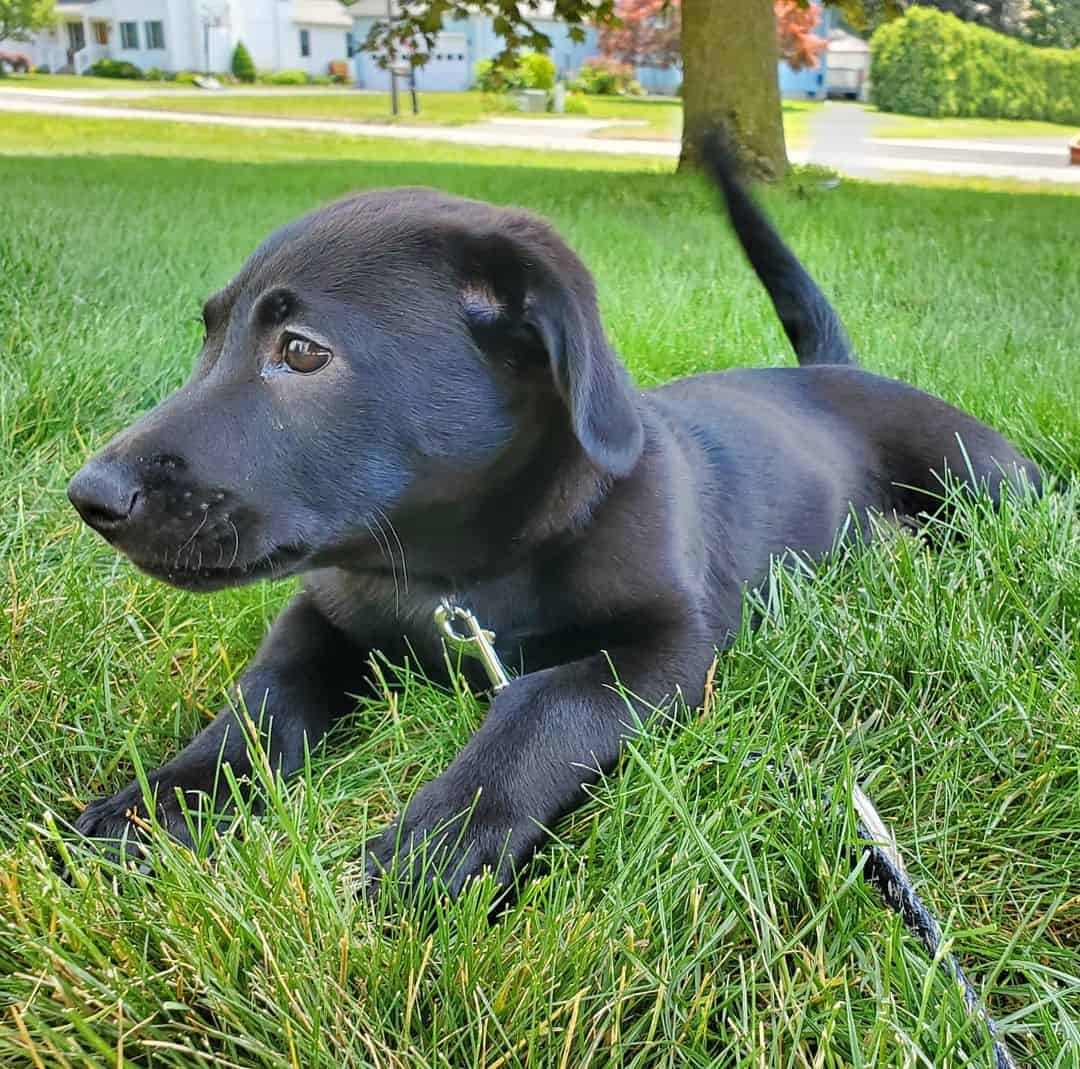
Photo from: @theothecorgidor
Getting a Corgi Lab mix puppy might be a bit more tricky than it seems due to the significant size difference.
As this is a fairly new designer dog, creating a second-generation crossbreed isn’t common. Not just that, but this can end in a very unpredictable puppy appearance, so most dog breeders won’t risk doing it.
Instead, the breeders will mate a male Corgi with a female Labrador Retriever. If it were the other way around, a small Corgi mother might have an issue giving birth to Labrador-sized puppies.
On many occasions, there will be no regular mating. Artificial insemination will be done in its place. Once again, this is due to the size difference, which might make breeding uncomfortable or even impossible for these dogs.
Corgi Lab Mix Puppies For Sale

Photo from:@jackson_the_corgidor
If you’re looking for Corgi Lab puppies for sale, you might notice that there are several places you can get these pups from. Reputable breeders, while the most expensive option, should still be your top choice. On the other hand, you should avoid places such as puppy mills or pet shops.
While both Corgis and Labradors are fairly healthy dogs, they are still prone to several health conditions that can be passed onto their mixed puppy. Reputable breeders will try to prevent this from happening by conducting various genetic screenings of their puppies.
If breeders mate only healthy dogs that don’t have high chances of developing some kind of disease, this means the puppies would likely be healthy as well.
On the other hand, puppy mills and pet shops care only about profit and not about the welfare of the puppies they’re selling. They often keep their dogs in terrible conditions and don’t pay enough attention to them. This can result in unhealthy puppies with behavioral problems.
If you try to save on your puppy, you might end up paying even more in the long run once the medical bills start rolling in. Not to mention the emotional pain of seeing your Corgi Lab mix suffer!
Corgi Lab Mix For Adoption
Another good option from an ethical point of view is to adopt. While the Corgi Lab mix isn’t a common dog breed, you might still find one at your local shelter. By adopting, you’ll not only be doing a good deed, but you’ll also end up only paying an adoption fee.
Still, there are a few issues with adoption. Most importantly, you will never know your dog’s background. If a dog has been abused, he might have some behavioral problems. Also, there is no way of knowing the pup’s medical history.
Fortunately, as Corgi Labs are usually well-behaved pups, you shouldn’t have any issues if you choose to adopt.
Does The Corgi Lab Mix Make a Good Family Dog?
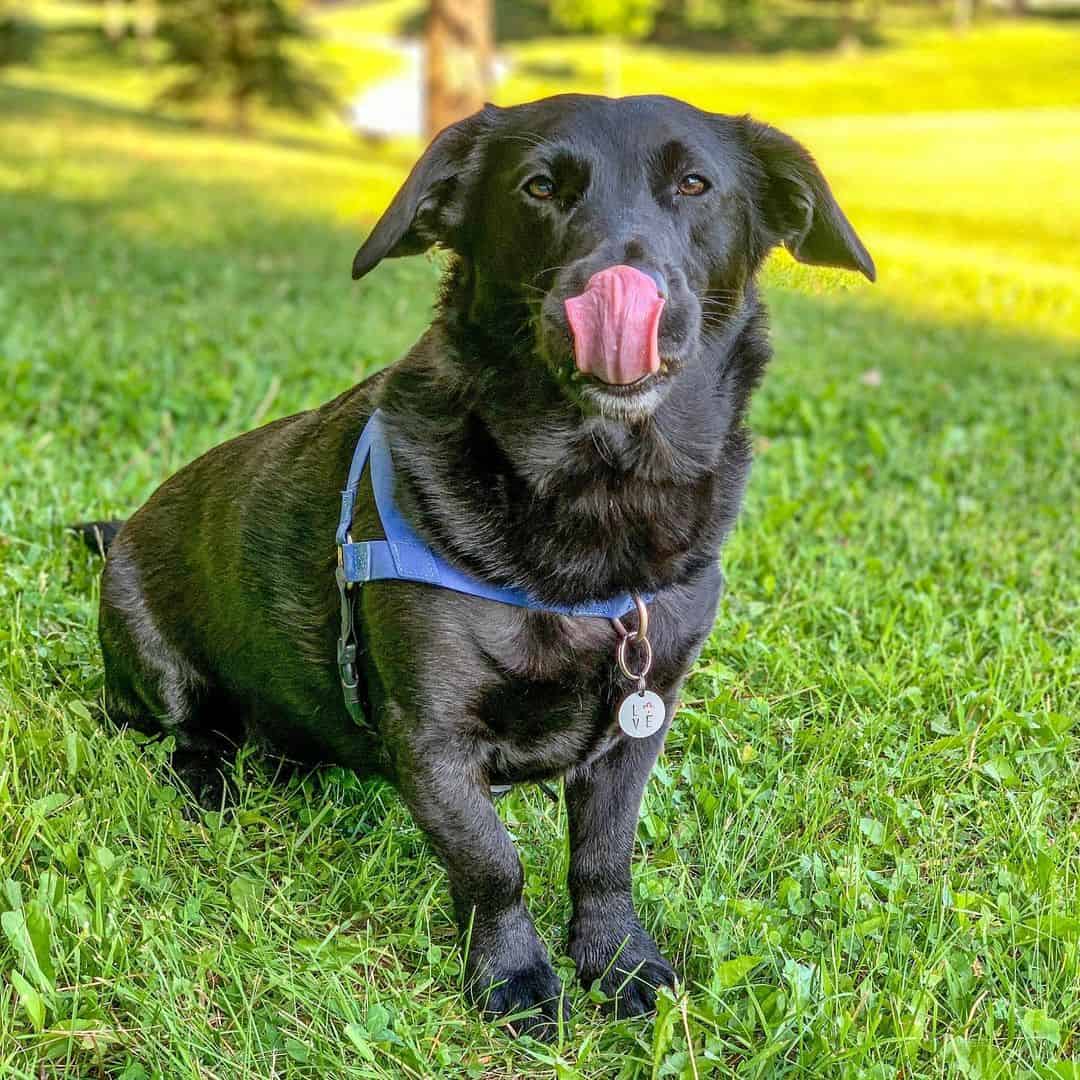
Photo from: @jackson_the_corgidor
If you’re looking for a good family dog, then a Corgi Lab might be the best option for you. This lovely pooch is the best of both worlds!
The patient and kind temperament of a Labrador Retriever can mellow all the stubbornness and protective behavior of a Corgi, eliminating the few behavioral problems this small dog breed has.
On the other hand, the Corgi certainly adds the cute factor to the mix. It also keeps the breed smaller, which can make them a better choice for families with small children.
Although it all comes down to each individual dog, getting a Lab Corgi mix would never be a mistake. This crossbreed makes for one of the best family pets out there!
Read Next: The Lab Catahoula Mix: Ever Heard Of The Labahoula?


